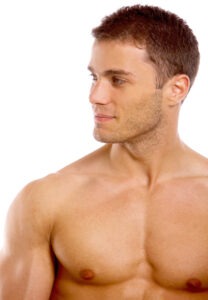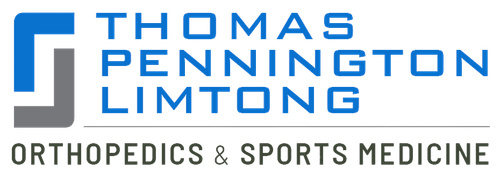 A rotator cuff is a group of tendons and muscles that surround the shoulder joint enabling the head of the upper arm bone to remain firmly within the shallow shoulder socket.
A rotator cuff is a group of tendons and muscles that surround the shoulder joint enabling the head of the upper arm bone to remain firmly within the shallow shoulder socket.
A rotator cuff injury can lead to a dull ache in the shoulder which typically worsens when the patient tries to sleep on the affected side.
A Possible Threat Due to Repeated Motion
Rotator cuff injuries develop most frequently in individuals who perform repetitive overhead movements in their line of work or sports — for instance, carpenters, painters, and individuals who play tennis or baseball. Aging also increases the risk of rotator cuff injury.
Board certified orthopedic surgeons Dr. Steven C. Thomas and Dr. Gregory T. Bigler provide treatments for the knee and shoulder to patients in Las Vegas, Nevada, and surrounding communities.
Symptoms
- Dull, deep ache in the shoulder
- Disrupted sleep, especially if the patient lies on the impacted shoulder
- The patient finds it challenging to comb their hair or reach behind their back
- Weakness in the arm
When to Consult a Doctor
The patient’s family doctor can assess short-lived shoulder pain. The patient should consult the doctor promptly if they experience immediate weakness in their arm following an injury.
The cause of rotator cuff disease may be either a substantial injury to the shoulder or progressive wear and tear of the tendon tissue. Repetitive heavy lifting or overhead motions for an extended duration may damage or irritate the tendon.
Risk Factors
Age
Aging increases the risk of sustaining a rotator cuff injury. Rotator cuff tears occur most frequently in people over the age of 50 years.
Certain Sports
The risk of sustaining a rotator cuff injury is higher for athletes who regularly perform repetitive arm movements, such as archers, tennis players, and baseball pitchers.
Construction Jobs
Professions such as house painting or carpentry warrant repetitive arm movements, usually overhead motions. These can cause damage to the rotator cuff over a period.
Family History
Genetics may be a factor in the development of rotator cuff injuries as they occur more frequently in certain families.
Diagnosis
The doctor will press on various parts of the shoulder and move the arm into different positions during the physical examination. They will also test the strength of the muscles around the shoulder and the arms.
Furthermore, they may recommend imaging tests in some cases, such as:
X-Rays
While a rotator cuff injury will not show up on an x-ray, it can detect bone spurs or other potential reasons for the pain, such as arthritis.
Ultrasound
This test makes use of sound waves to generate images of the structures inside the body, especially soft tissues such as tendons and muscles. It enables dynamic testing, evaluating the structures of the shoulder as they move. Ultrasound allows a comparison between the impacted shoulder and the healthy shoulder.
Magnetic Resonance Imaging (MRI)
This technology involves the use of radio waves and a strong magnet. The images acquired provide an in-depth view of all structures of the shoulder.
To a large extent, the image quality depends on the quality of the equipment used.
Board certified orthopedic surgeons at the Thomas & Bigler Knee & Shoulder Institute receive patients from Las Vegas, Nevada, and nearby areas for knee and shoulder treatments. If you would like to schedule an appointment or learn more about the Knee and Shoulder Institute procedures & treatments performed by Las Vegas, Nevada board-certified surgeons Steven C. Thomas, MD and Gregory T. Bigler, MD. Contact the office today click here.
